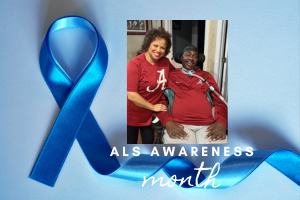From wheelchair ramps to handicapped parking spots, we make real-world accommodations for people with disabilities every day. Because it’s considerate. Because it’s inclusive. Because it’s the right thing to do.
As the smartphone continues to change the world, people are asking two questions: Shouldn’t we provide the same accessibility in the digital world? And, looking at it the other way, why can’t we use digital technology to create future accommodations in the real world?
That right there is the foundational idea of Augmentative and Alternative Communication, or AAC. AAC refers to any method of communication other than speech, and can be as simple as eye blinks and gestures or as advanced as electronic communication devices. For years, patients with ALS or other speech-impeding diseases have been relying on tools like white boards for non-verbal communication. But in recent years, the smart-technology world has seen an upward trend in the number of AAC apps.
To help you navigate the ever-growing world of AAC software and apps, here’s a look at the range of AAC options available today.
1. SimpliHere
We’ll start with our favorite (winky face). The three-pronged interface of SimpliHere provides augmentative and alternative communication tools in the form of easy-to-read symbols, connection to the greater ALS community, and access to valuable resources like news updates, products, and services to help manage daily life. Exciting features include an integrated newsfeed, quick connections to forums, and voice-bank tools. Large buttons make this app easy-to-use for patients with muscle control symptoms, as well. SimpliHere is still operating under 1.0 status, which means users are encouraged to submit feedback via reviews and ratings to let SimpliHere know how they can improve the app in SimpliHere to best meet your needs. Free on iTunes
This easy-to-use app converts text to speech with high-quality voices. You can even iSpeech Bush ™ or iSpeech Obama TTS to have your text read aloud by a former president! Free on iTunes
3. Proloquo2Go
As one of the biggest AAC apps on the market, Proloquo2Go is symbol-based. However, it also offers text-to-speech voices that sound pretty natural, automatic conjugation, and a default vocabulary of over 7,000 items. This app can be used on an iPhone, iPad, or iPod Touch. $249.99 on iTunes
4. Talk For Me
This text-to-speech app has tons of customizable options for saving frequently used sentences and phrases. Users have the option of setting the speech to read as they type, or after the sentence is completed. There’s even punctuation awareness and Siri Shortcuts Support. Free on iTunes
5. GazeSpeaker
For patients who have lost their speech and mobility, GazeSpeaker may be the best tool out there. It features a grid with different cells, and you can modify the grid to suit your needs. To speak, simply activate a cell on the grid by looking at it on your desktop or tablet. Features include a training module, contacts module, auto-adaptive predictive keyboard, the ability to read and write emails, watch videos, listen to music, and navigate Google Maps with your eyes. Free at gazespeaker.org
6. Voice4U
Voice4U is an image- and symbol-based AAC that can generate a voice in thirty different languages. Although it comes with 180 symbols, you can add up to 10,000, and you can even connect the app to Bluetooth or use it offline. $59.99 on iTunes
One of the cleanest, smallest apps, Locabulary Lite allows users to create categories and phrases that are saved and easily accessible with a few clicks. Free on iTunes








